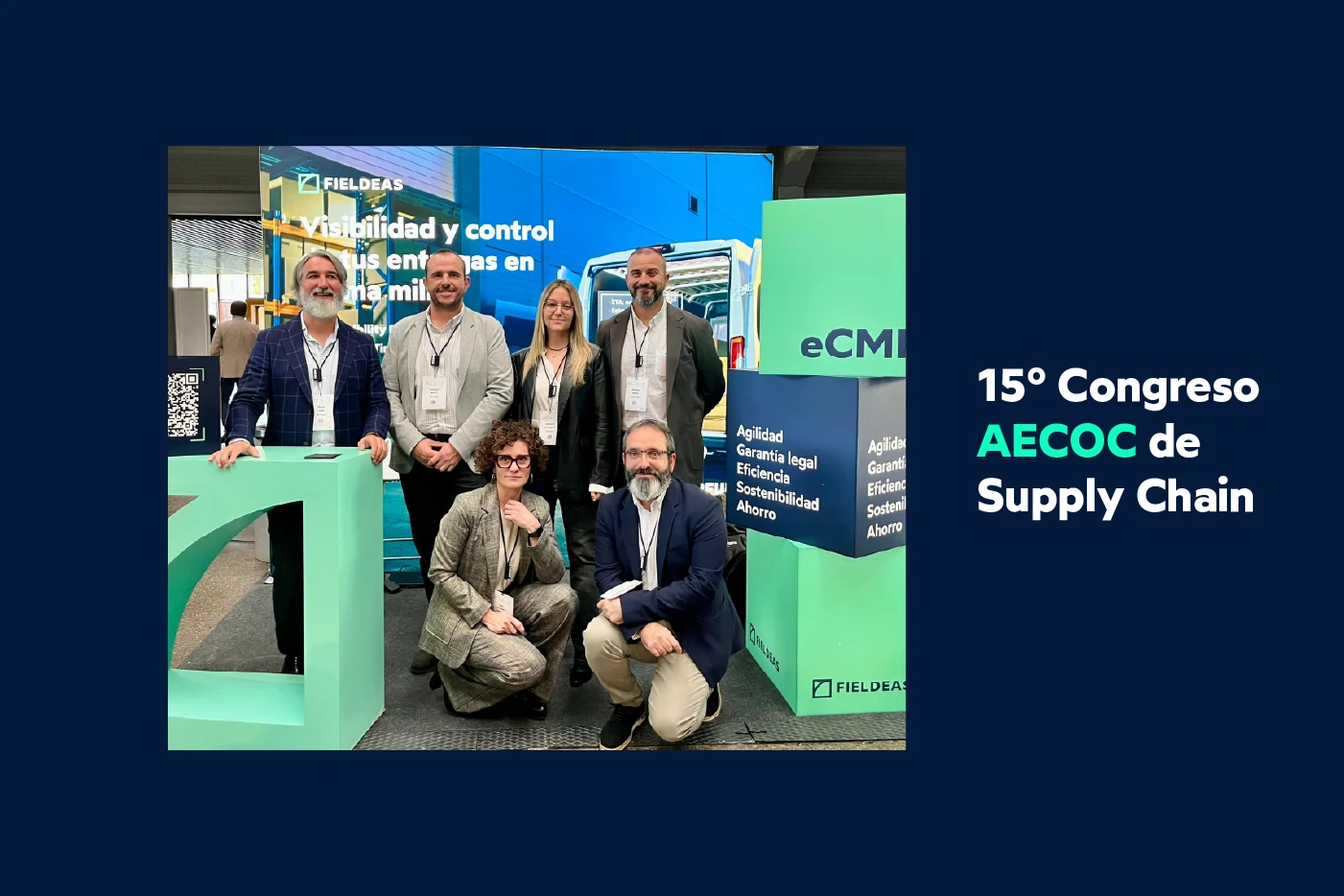The formula for successfully integrating a Supply Chain Visibility solution
Second edition of FIELDEAS Talks. "An old formula for the new times: veni vidi vici...signum"


The freight transport sector is undergoing an unprecedented digital transformation process. However, the very structure of the road sector, which is highly fragmented, makes it difficult for technological solutions to penetrate all layers of the chain as a supply chain visibility solution.
This was one of the concerns highlighted during the second edition of FIELDEAS Talks, where the best formula for achieving end-to-end supply chain visibility with a complete supply chain visibility solution was discussed.
The main objective of all industry players is to obtain real-time information that allows complete visibility of each package. However, the executives who participated in this meeting agreed on a series of barriers that prevent this objective from being achieved:

Once the challenges had been presented, the discussion table gave way to solutions. For experts, the key to the success of visibility in transport and logistics processes is that digitization reaches the last link.
In addition, they focused on the following solutions:
As a solution to the lack of full supply chain visibility, transportation and logistics executives who participated in the second edition of FIELDEAS Talks pointed to transport supplier loyalty.
As they explained, if you can work with transport providers over the long term, you can get them to make use of the technological solutions that the shipper employs. On the other hand, if the transportation system is based on high percentages of spot freight, then it is difficult to get carriers to use these technologies.
With supplier loyalty, internal management is boosted, resulting in greater visibility when goods are in transit.
Another key to a successful supply chain visibility solution is integration.
The main complaint from industry players is that each technology provider uses a different platform, forcing them to work with different applications or access different websites to enter data for each shipment.

Therefore, all advocate the integration of systems, giving way to the ecosystem concept, with the objective that all successive transport levels can, from a single point, enter transport data. This streamlines data collection and drives real-time information, which is the foundation of complete visibility.
Beyond the technical issues, the focus for a successful suplly chain visibility solution must be on training and outreach.
As the experts pointed out, if digitization is to reach all levels of the chain, a training strategy must be promoted that eliminate the culture of paper and data ownership to give way to a culture based on transparency, collaboration and digitalization.

In addition, they are committed to promoting a dissemination strategy, in which every regulatory advance regarding the digitization of the transport sector, the benefits of digitizing processes and the available ways to do so progressively and on the basis of public aid, will be reported.
However, all these solutions will not have an effective result if they are not accompanied.
In this regard, it is particularly important to have a technology solutions provider that, in addition to offering technical support, accompanies each company in the transition.
At FIELDEAS Track and Trace we believe that change management is an essential part of any project, playing the role of a technology company, but also of a consulting firm.
Specifically, from FIELDEAS Track and Trace we propose a model based on four steps:

As we have seen, the industry is demanding a platform that includes all the necessary modules to gain complete visibility throughout the supply chain, from document management to dock management, route optimization and carbon footprint calculation. FIELDEAS Track and Trace is an “only one” that already offers this comprehensive solution to the market.that already offers this integral solution to the market and that, in addition, accompanies its users throughout the entire change process.
In addition, FIELDEAS Track and Trace is the most advanced, flexible and secure Supply Chain Visibility platform on the market.


07 Nov 2025
Measuring to improve: why your digital form needs KPIs
In the current business scenario, where efficiency and traceability are key to competitiveness, the digital form has become an essential resource for capturing, organizing and analyzing data in real time….

04 Nov 2025
How to integrate eCMR into your company: A step-by-step guide to digitizing transportation
We have already talked several times in this blog about the importance of starting the digital transformation of transportation with document digitalization or eCMR. On this occasion, we are going…

31 Oct 2025
How digital forms drive sustainability in industry
Digital forms have gone from being a simple operational tool to become an essential component of industrial sustainability strategies. Beyond replacing paper, its use transforms the way organizations collect, manage…

29 Oct 2025
Supply chain challenges and the key role of digitization
The 15th edition of the AECOC Supply Chain Congress brought to the table the main challenges facing the supply chain in an uncertain, volatile and highly competitive environment. Under the…